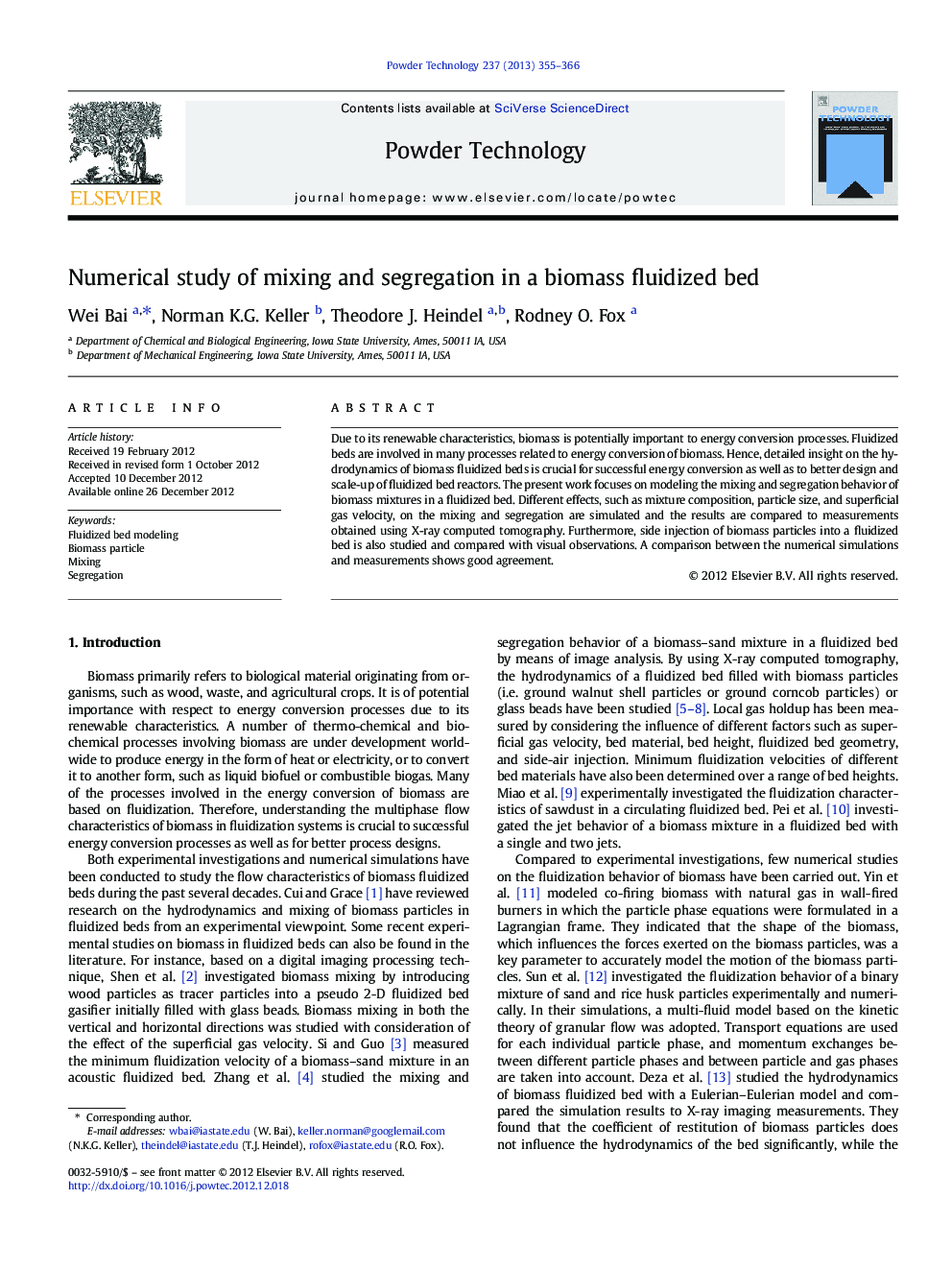| Article ID | Journal | Published Year | Pages | File Type |
|---|---|---|---|---|
| 236852 | Powder Technology | 2013 | 12 Pages |
Due to its renewable characteristics, biomass is potentially important to energy conversion processes. Fluidized beds are involved in many processes related to energy conversion of biomass. Hence, detailed insight on the hydrodynamics of biomass fluidized beds is crucial for successful energy conversion as well as to better design and scale-up of fluidized bed reactors. The present work focuses on modeling the mixing and segregation behavior of biomass mixtures in a fluidized bed. Different effects, such as mixture composition, particle size, and superficial gas velocity, on the mixing and segregation are simulated and the results are compared to measurements obtained using X-ray computed tomography. Furthermore, side injection of biomass particles into a fluidized bed is also studied and compared with visual observations. A comparison between the numerical simulations and measurements shows good agreement.
Graphical abstractAt low fluidization velocity, the ground walnut shell particles and glass beads reach a steady state fairly fast in a mixture containing the same volume fraction of the two components. A criterion, particle segregation number (PSN), is used to quantify the extent of segregation. The PSNs obtained from the numerical simulations agree well with those from X-ray CT measurements.Figure optionsDownload full-size imageDownload as PowerPoint slideHighlights► The mixing/segregation behavior of biomass mixtures is studied in a fluidized bed. ► Different effects on the mixing/segregation are investigated. ► At low fluidization velocities, large content of biomass promotes the segregation. ► Large biomass particles prevent the segregation. ► High fluidization velocities promote the mixing of side-injected biomass particles.
